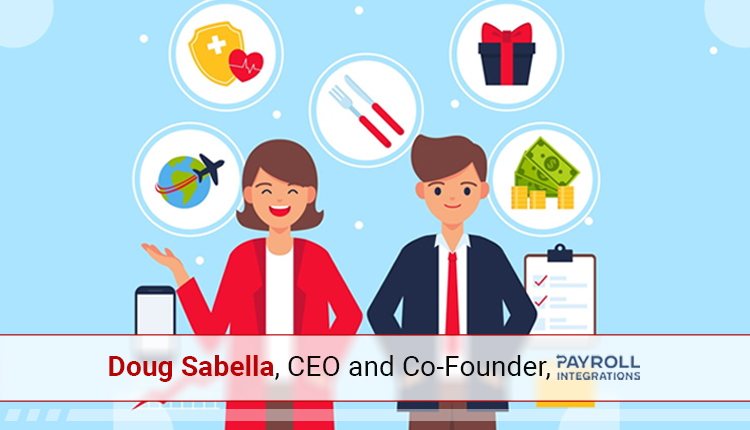When considering a new job, it’s no secret that benefits are of top consideration for prospective employees. In fact, a majority of employees say they would not accept a new job offer if retirement plans (67%) and health insurance (65%) were not offered as benefits, according to Payroll Integrations’ 2024 State of Employee Financial Wellness Report.
But, once employees join a company and enroll in benefits, many of them will never think much of them again beyond open enrollment periods.
This is not because employees don’t care–it’s clear that benefits are important to them. It’s because many aren’t educated on their benefits past having them. Employees know company benefits like retirement and health insurance are critical to their present and future–but a large majority of them don’t understand enough of each benefit to ensure they’re taking full advantage of them.
Catch more HRTech Insights: HRTech Interview with Ryan Bergstrom, Chief Product and Technology Officer at Paycor
According to Payroll Integrations’ 2024 State of Employee Financial Wellness Report, nearly three-fourths (73%) of employees don’t feel completely educated about their company’s benefits. And employees’ lack of education around their benefits is impacting their participation in them.
It’s up to employers to change this.
For our inaugural State of Employee Financial Wellness Report, we spoke with 250 full-time U.S. employees and HR leaders about how educated employees feel about their benefits, and the current state of company benefit education. Here are three ways employers can best support employees to ensure they’re fully educated on the importance and value of their company benefits:
Eliminate HR Administrative Burdens To Focus More Time on Employees
HR teams are spending a disproportionate amount of time on administration, hindering many of them from spending time educating employees on company benefits and working on other strategic tasks. In order to be able to educate employees, HR teams need to first address the administrative tasks that take the majority of their day.
According to Payroll Integrations’ 2024 State of Employee Financial Wellness Report, HR managers spend 12 hours on average, or more than one-fourth of their work week, on payroll and benefit-related administrative tasks, with 27% of them saying they spend 20 hours or more. This includes tasks like onboarding employees, managing payroll and benefits, ensuring adherence to regulations and more.
To solve this, HR teams need to leverage technology to automate the manual tasks and processes that they’ve been using for decades. This will allow teams to remove hours of administrative work and focus on what matters most: their employees.
Recognize Employees’ Level of Benefit Education–And How It Differs Across Generations
In order to effectively educate employees, employers need to first recognize that employees will vary in their feelings of education around benefits.
With varying levels of benefit education, employees need to hear different things to take full advantage of their benefits. While it’s not sustainable to educate every employee individually, especially in larger organizations, employers can speak to different topics across generations. Employees within generations are typically in similar life stages and will have similar benefit education based on their years in the workforce.
For example, Millennials feel the most educated on employee benefits across generations, according to the 2024 State of Employee Financial Wellness Report. Thirty-one percent (31%) of Millennials (ages 27-42) say they feel completely educated on company benefits, while Gen Z workers (ages 18-26) are the least educated with 24% saying the same.
This means employers will have to spend a little more time with Gen Z workers and educate them not only on company benefits–but on why they’re important. With other generations, employers can typically build on existing benefit education foundations, ensuring that employees fully understand how to maximize their benefits.
Once employers recognize where employees are in their benefit education, they can meet them where they are to provide the most effective guidance.
Keep Employees’ Benefit Education Consistent
The more educated employees are on benefits, the more likely they are to participate. This is true across every single benefit, some with more contrast than others.
For example, according to the 2024 State of Employee Financial Wellness Report, employees that feel educated on company benefits are three times more likely to opt in for HSAs and FSAs (44%) than those that don’t feel educated (15%). And employees that feel educated on company benefits are participating five times more in lifestyle compensation than those who aren’t (15% and 3%, respectively) and three times more in financial education and planning (24% and 8%, respectively).
In order to keep this participation up, employees need to continue to educate employees on their benefits and how they’re changing–whether from a company perspective or a larger industry perspective. From town halls to group meetings to communications like email and Slack, HR teams should constantly be in touch with employees about their benefits.
Employees that focus their efforts on educating employees on their benefits will see employees participating more in their benefit programs. Beyond that, they’ll see increased employee satisfaction and retention. Today, the more employers can help employees along their financial wellness journey, the better for everyone.
Read More on Hrtech : HRTech Interview with Edward Greene, Executive Vice President and Chief Human Resources Officer at…
[To share your insights with us, please write to psen@itechseries.com ]

